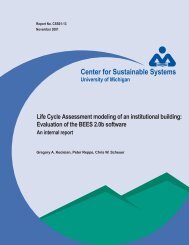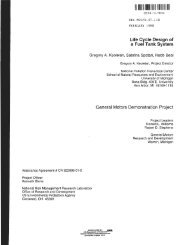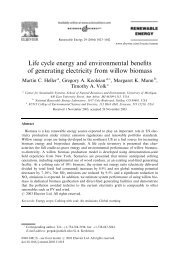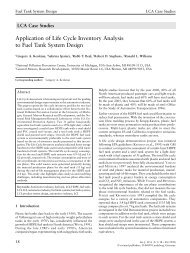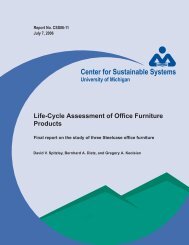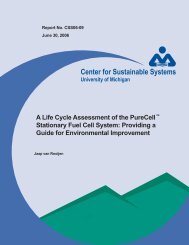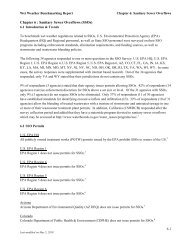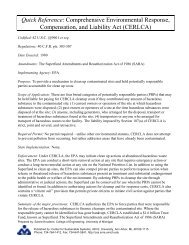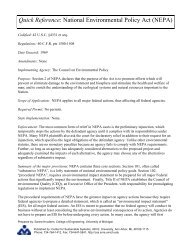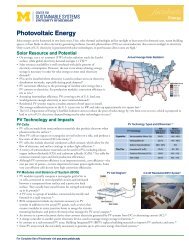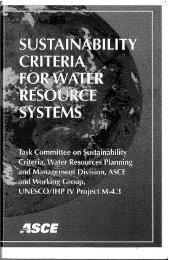Life Cycle Optimization of Residential Air Conditioner Replacement
Life Cycle Optimization of Residential Air Conditioner Replacement
Life Cycle Optimization of Residential Air Conditioner Replacement
Create successful ePaper yourself
Turn your PDF publications into a flip-book with our unique Google optimized e-Paper software.
Index (10 SEER =1)2.502.001.501.000.500.005 10 15 20SEERweight indexcost indexextrapolated costsFigure 3.3: Comparison <strong>of</strong> the Producer Cost and Weight Index for an Outdoor Unit basedon Efficiency3.1.4 Refrigerants and Refrigerant LinesRefrigerantsRefrigerants were considered separately from the other components in the CAC. The mass <strong>of</strong>refrigerant charge was estimated from product specification sheets. From these datasheets, thefollowing exponential curve was fitted to create a refrigerant mass function: 1.124 1.019 0.7489 where m refrig is the mass <strong>of</strong> refrigerant, is efficiency in terms <strong>of</strong> SEER, and c is unit capacity in1000s <strong>of</strong> BTUs (R 2 = 0.60). Improving efficiency and increasing capacity <strong>of</strong> CAC units tend toincrease the size <strong>of</strong> the coils for the outdoor units and more coil volume tends to increase themass <strong>of</strong> refrigerant required (Skaer, 2005).Outdoor units typically come pre‐charged with enough refrigerant to operate with a 15 to 20foot lineset connecting the indoor and outdoor components. Installers must frequently adjustthe level <strong>of</strong> refrigerant based on the particular installation configuration. It was assumed therefrigerant pre‐charge serves as a good approximation for the total mass <strong>of</strong> refrigerant in mosthome CAC systems.Two types <strong>of</strong> refrigerants were considered in the analysis, R‐22 and R‐410a. Historically, R‐22has dominated the residential CAC market. R‐22 is a hydrochlor<strong>of</strong>luorocarbon (HCFC) and assuch poses a threat to the stratospheric ozone when released into the air with an OzoneDepletion Potential <strong>of</strong> approximately 0.05 (Süss & Staub, 2009). HCFCs are being phased out bythe EPA to comply with amendments to the Montréal Protocol. As part <strong>of</strong> this phase outprocess, R‐22 will no longer be used in new CACs after January 1, 2010. Chemical manufactureswill still be allowed to produce limited amounts <strong>of</strong> R‐22 to service old units until 2020.



